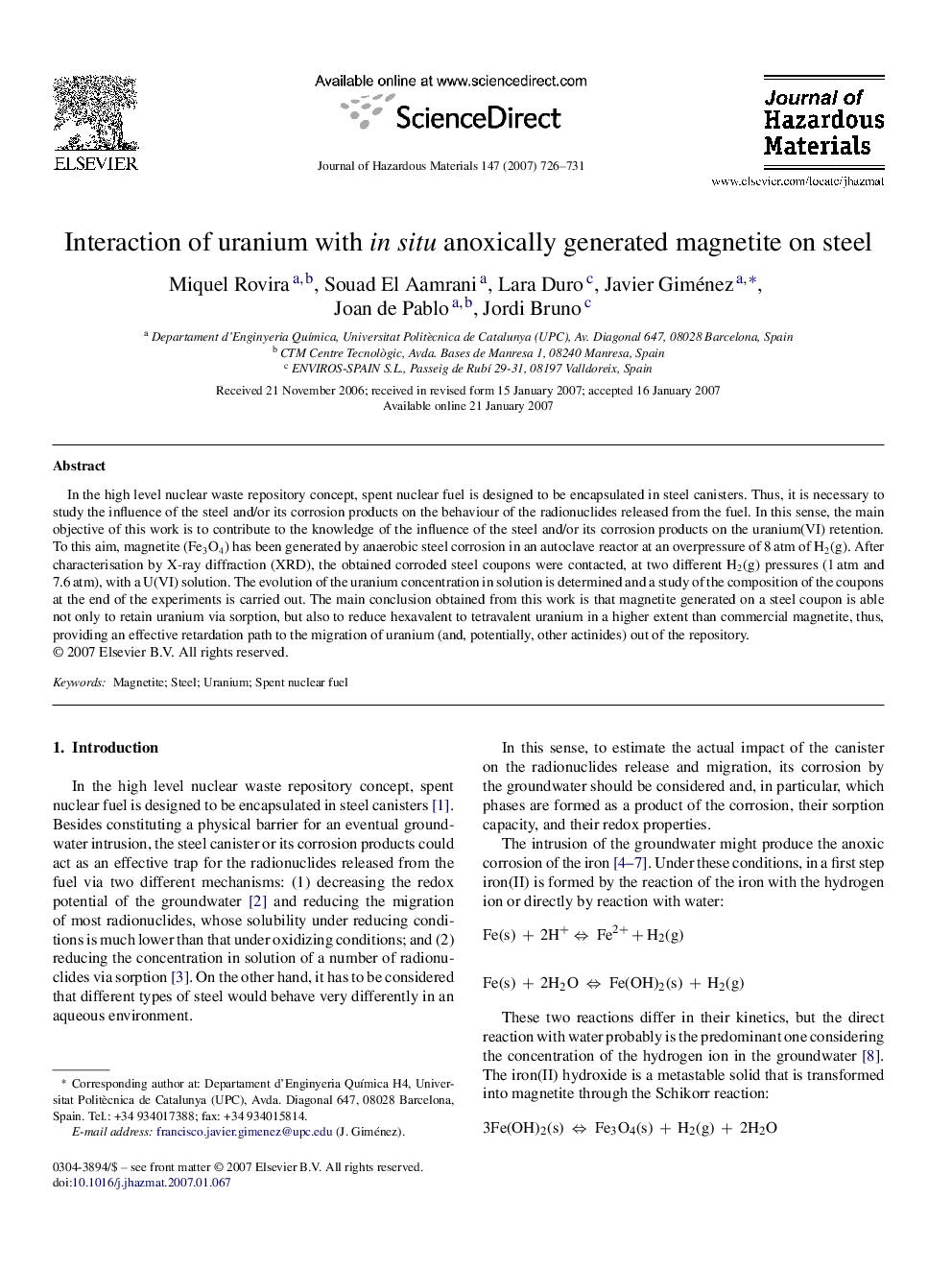| Article ID | Journal | Published Year | Pages | File Type |
|---|---|---|---|---|
| 583860 | Journal of Hazardous Materials | 2007 | 6 Pages |
Abstract
In the high level nuclear waste repository concept, spent nuclear fuel is designed to be encapsulated in steel canisters. Thus, it is necessary to study the influence of the steel and/or its corrosion products on the behaviour of the radionuclides released from the fuel. In this sense, the main objective of this work is to contribute to the knowledge of the influence of the steel and/or its corrosion products on the uranium(VI) retention. To this aim, magnetite (Fe3O4) has been generated by anaerobic steel corrosion in an autoclave reactor at an overpressure of 8Â atm of H2(g). After characterisation by X-ray diffraction (XRD), the obtained corroded steel coupons were contacted, at two different H2(g) pressures (1Â atm and 7.6Â atm), with a U(VI) solution. The evolution of the uranium concentration in solution is determined and a study of the composition of the coupons at the end of the experiments is carried out. The main conclusion obtained from this work is that magnetite generated on a steel coupon is able not only to retain uranium via sorption, but also to reduce hexavalent to tetravalent uranium in a higher extent than commercial magnetite, thus, providing an effective retardation path to the migration of uranium (and, potentially, other actinides) out of the repository.
Related Topics
Physical Sciences and Engineering
Chemical Engineering
Chemical Health and Safety
Authors
Miquel Rovira, Souad El Aamrani, Lara Duro, Javier Giménez, Joan de Pablo, Jordi Bruno,
